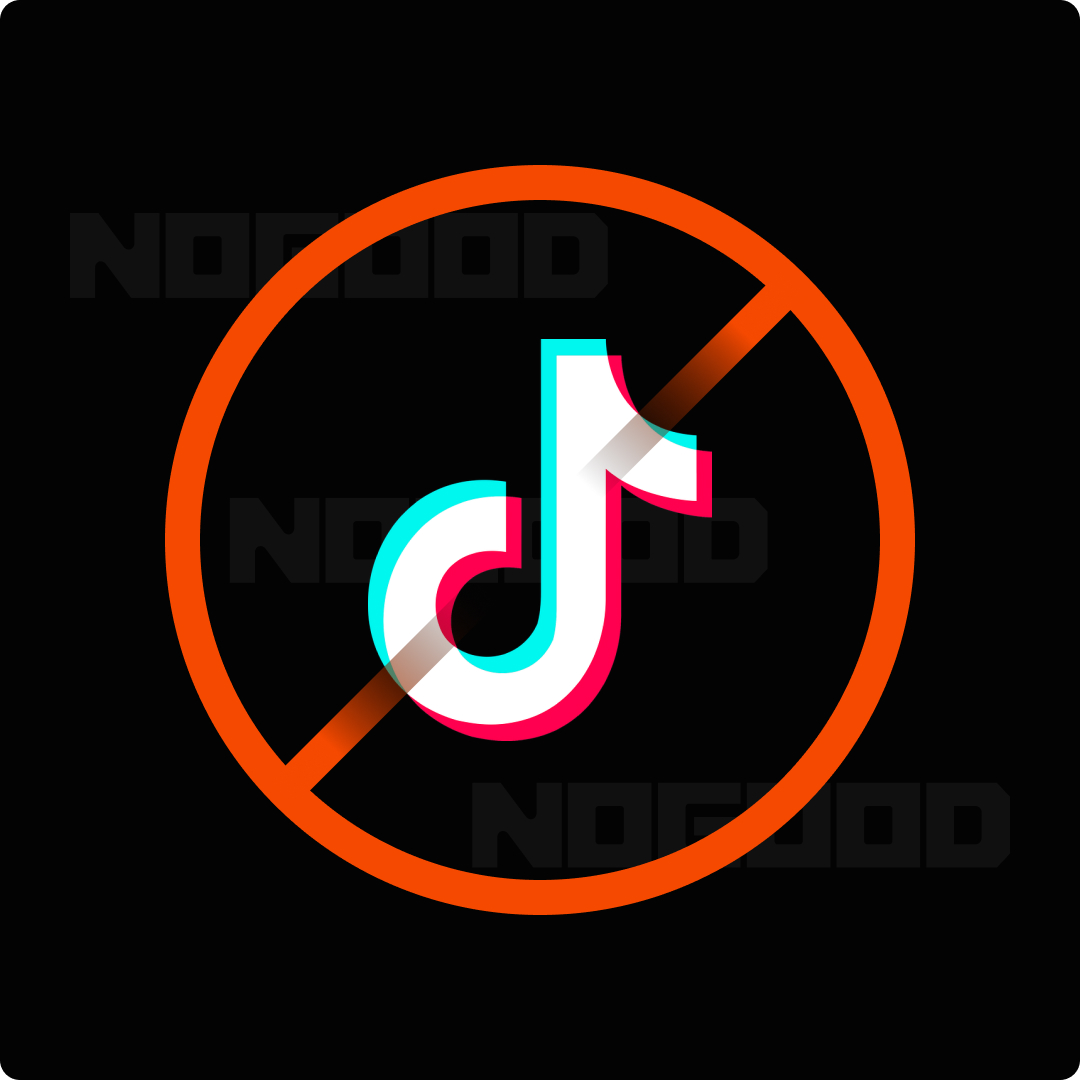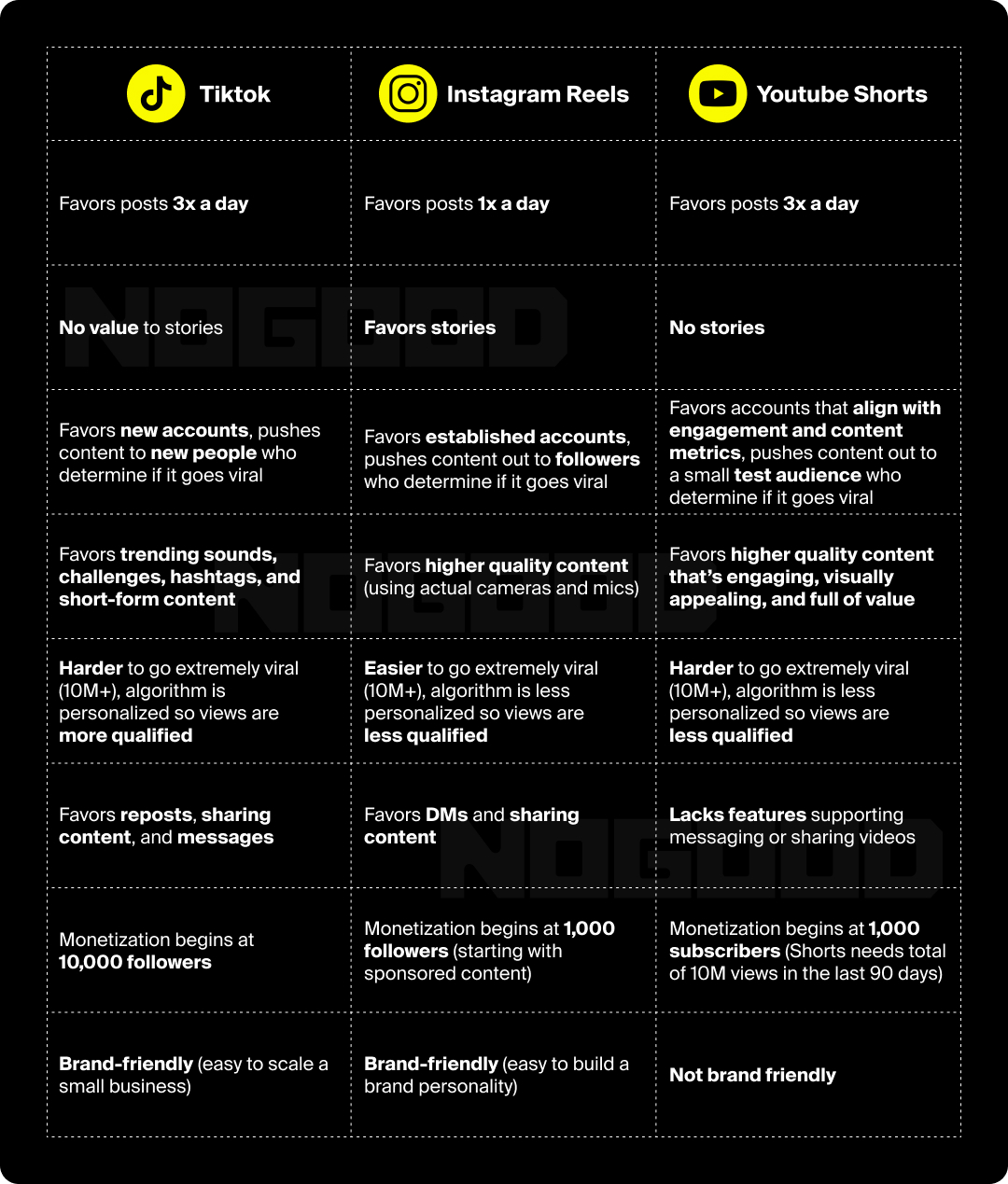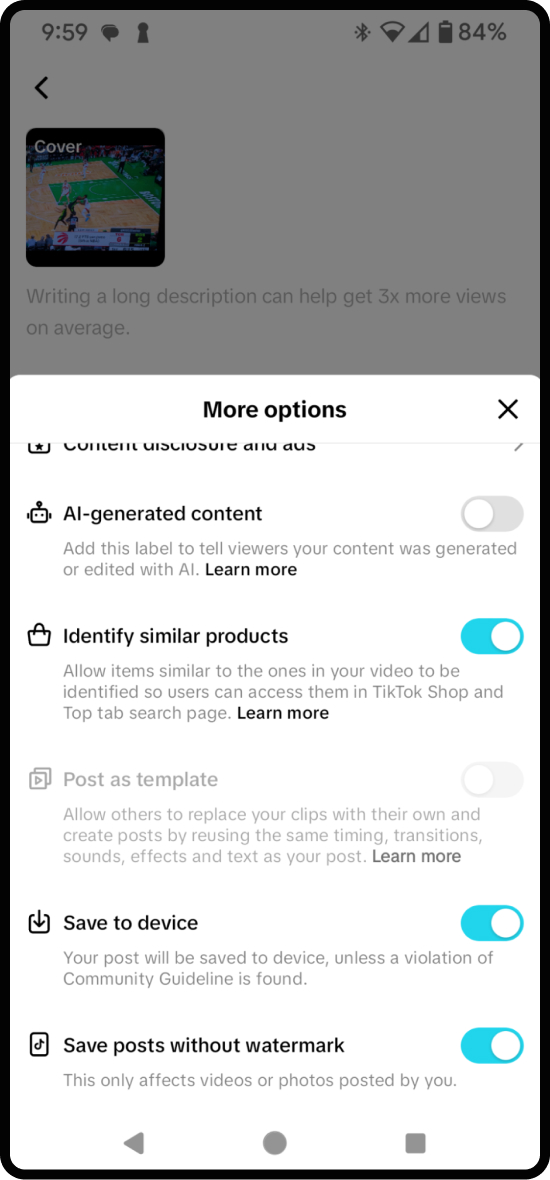
With a potential ban of TikTok in the United States still looming, your marketing strategy may be up in the air. Although TikTok briefly went dark in the US on January 19, it returned in less than 24 hours after assurances from then-incoming President Trump that he would push off the ban. The saga continues to unfold, as potential buyers gather and the president looks to barter a deal.
From small businesses to multinational corporations, the TikTok ban could hit companies hard. TikTok Shop has produced large revenue streams for many creators and businesses, and they need to be proactive in moving their audiences to other platforms.
Let’s take a look at two big questions around how the potential ban will affect businesses, creators, and users:
- Why ban TikTok?
- What steps can you take to diversify your marketing channels to prepare for a potential TikTok ban?
Why Does the U.S. Government Want to Ban TikTok?
Bipartisan congressional action passed legislation in April 2024 to address the potential for the Chinese government to use TikTok as a propaganda machine on American users. Roughly half of the U.S. has a TikTok account, and almost four of 10 users under the age of 30 use TikTok to get their news.
The bill put the Chinese company ByteDance, which owns TikTok, in a bind. The parent company received an ultimatum: Sell TikTok to a business not headquartered in an adversary country or the app loses access to the U.S. market. Other countries, such as India, Albania, and Nepal, already banned the popular video app (at least temporarily). Several countries have banned the app from government devices – Taiwan, Britain, France, and Australia among them.
ByteDance has several potential buyers mulling making offers, though the details remain fluid.
The ban has joined together strange bedfellows. President Trump opposes the ban (he now says the app holds a “warm spot” in his heart, after promoting a TikTok ban during his first term as president), as do the ACLU and some liberal legislators, such as Democratic Senator Ed Markey of Massachusetts, on the grounds of the right to free speech.
When Will the TikTok Ban Go Into Effect?
The Supreme Court ruled on January 17 to uphold the ban, clearing the way for TikTok to briefly shut down the platform in America on January 19.
“There is no doubt that, for more than 170 million Americans, TikTok offers a distinctive and expansive outlet for expression, means of engagement, and source of community,” the justices wrote in a unanimous opinion. “But Congress has determined that divestiture is necessary to address its well-supported national security concerns regarding TikTok’s data collection practices and relationship with a foreign adversary.”
President Trump issued an executive order on January 20, his first day in office, that gave TikTok 75 days to sell the platform to a non-Chinese entity. Later, the president presented an idea for how to make a deal with ByteDance that would form a joint venture, rather than a full sale. The legality of the idea remains undecided.
“I would like the United States to have a 50% ownership position in a joint venture. By doing this, we save TikTok, keep it in good hands and allow it to [stay] up,” he posted on Truth Social.
Where Will TikTok Users Go With TikTok Banned in the US?
If the past proves a harbinger of the future, Instagram and YouTube would benefit from TikTok’s ban. Instagram Reels and YouTube Shorts sit in poll position as the major competitors ready to lure in former TikTok users due to their vertical video format. Many TikTok users already utilize these platforms.
After India banned TikTok in 2020, users flocked en masse to Instagram and YouTube. Despite registering as two of America’s most-used social media platforms, active users in India for both platforms have surged to roughly double that of American users.
Let’s dive into some specifics of the platforms:
Instagram functions more similarly to TikTok than YouTube Shorts. In terms of content shareability, Instagram has the edge, thanks to its DMs feature. We anticipate that trend-based content will start to populate on Instagram in a post-TikTok ban landscape.
Instagram is also a more brand-friendly space, allowing for balance between a polished brand presence and an unpolished, culture-driven element. It boasts roughly as many users as TikTok’s 170 million in the U.S., including 75% of people between 18 and 24.
With a combination of various asset formats (Stories, Reels, feed posts like carousels and broadcast channels), Instagram lends itself to combining discovery with fostering community more naturally. Instagram has been the most explicit in their efforts to replicate TikTok’s model, so the platform is the most likely to become the new home to the cultural momentum TikTok holds.
YouTube
YouTube has more active users, thanks in large part to its monopoly on long-form content. That base funnels directly into YouTube Shorts, paving the way for massive innate reach/viewership potential for brands to build community. The platform’s estimated user base reaches almost 240 million in the U.S. Females make up around 51% of U.S. YouTube users above 18, compared to Instagram’s roughly 55% skew.
The Shorts algorithm is very willing to give new content a chance, especially when compared to Instagram and TikTok. Additionally, YouTube aggressively pushes Shorts discovery across all real estate on the YouTube app and website (e.g., suggested videos).
YouTube also gives more flexibility for organic, whether you want to do short-form or long-form content. It also features a much more robust paid social format than Instagram, thanks to pre-roll ads on long-form content along with ads in short-form.
Last but not least, YouTube is the original social search platform, making it a powerful contender for any content that stems from search intent and SEO-driven research. This applies to both in-app and external search intent: YouTube Shorts are increasingly indexed and surfaced on the Google SERP as part of Google’s helpfulness algorithm update.
Where Can You Reach Gen Z Outside of TikTok?
In addition to YouTube Shorts, Instagram Reels, and Snapchat, Gen Z has shown a penchant for Discord, Reddit, and Twitch.
While those latter platforms don’t align perfectly in terms of repurposing existing content, Gen Z feels at home on them. Our talented colleagues here at NoGood have written excellent guides for each platform that are worth your time:
- Discord Marketing: Creating a Brand Community for Gen-Z
- Reddit Marketing Guide: Strategy, Examples & Best Practices
- Twitch Marketing: What You Need to Know
The most successful companies and brands often have one channel that produces the best results, but don’t put all your eggs in one basket – TikTok faces issues today, whereas next year it could be another platform in decline or at risk.
How to Diversify Your Marketing Channels Beyond TikTok
First, look at tactics from your existing TikTok growth strategy and apply those that work on Reels and Shorts immediately. In particular, respect short attention spans – “three seconds or less” – and a more visual nature that younger users prefer with product and brand discovery. Be as relevant and fresh as possible.
Next, find your best-performing TikToks and reuse them on other social media platforms when it makes sense. Repurposing your TikToks on Instagram Reels, YouTube Shorts, and Snapchat could work well, as their placements call for the same 9:16 aspect ratio that TikTok uses.
However, don’t overdo it. With users coming over from TikTok to your other platforms, you’ll want to avoid showing them the exact same content they’ve already seen. Instead, focus on net-new content and reallocating assets previously dedicated specifically to TikTok in order to further bootstrap the push and keep new users engaged. Perhaps you have a different cut of the video that garnered big engagement on TikTok that you can try out on other platforms.
Each platform has its own culture and aesthetic. You’ll need to take the content that worked best on TikTok and do more than mindlessly post it on Shorts or Reels. To help with that process, take a look at our guide on Reels vs. TikTok vs. Shorts.

Repurposing your content doesn’t end with Reels (Instagram and Facebook) and Shorts. Investigate opportunities for your 9:16 videos on X or in the LinkedIn video tab, should they make sense as educational or workplace culture fits.
How Can I Save My TikToks to Reuse Them on Instagram Reels, YouTube Shorts, etc.?
There are different workflows you can set up that automatically save your TikTok videos in Google Drive, for instance. Here’s one from Repurpose.io you can check out. Or, you can try a one-time download option like Tokbackup to save your TikTok videos without the watermark on them.
Another option is a site like TikTok to MP4 Converter, which lets you download individual TikTok videos by using their URL.
How to Save Your TikToks Without Watermarks

TikTok has a built-in feature you can use to save TikToks without a watermark, but you’ll need to do so before you publish the video. Before posting, click on “More options” toward the bottom of the screen and make sure “Save posts without watermark” is enabled.
User Data Access: In anticipation of the shutdown, TikTok plans to provide users with a pop-up notification directing them to a website where they can download their data.
How Can You Convince Your TikTok Followers to Join You on Instagram, YouTube, and Elsewhere?
Get the word out now – offer other platforms where you’re active. Don’t spam your followers, but you can avoid losing your audience should the TikTok ban take place by trying the following:
- Add a link to your other key social media platforms in your bio.
- Mention your other social media handles in your TikToks.
- Create specific TikToks highlighting the value prop of your content on Instagram, YouTube, and other social media platforms – if the content is different, explain how.
- Use direct language – “Follow me on…”
- Consider special offers that require users to follow you on other platforms.
TikTok clearly doesn’t want users to jump ship, so you’ll need to use tact and discretion with the above prompts. Some creators have resorted to “mouthing” the name of the platform where they want their users to follow them. Whatever tactic you utilize, don’t wait.
Social Media Has Big Shoes to Fill in TikTok’s Wake
No matter what happens in terms of the ban’s enforcement, content marketing practices developed on TikTok will continue to emanate across different platforms (potentially more so with TikTok users migrating over). Before TikTok, YouTube Shorts and Instagram Reels didn’t exist. The app has modernized and pioneered short-form content, and its competitors will attempt to capitalize on the gap in the market left in its wake.
How do you feel about a TikTok ban? Let us know in the comment section, and thank you for reading!
Additional FAQs on the TikTok Ban
Will I lose my content?
If TikTok is banned, users will lose access to the platform entirely in the US. Previously downloaded content on your devices will remain accessible, but it will no longer be possible to retrieve any data stored on TikTok servers after this date. We strongly recommend backing up your content immediately, to avoid losing important data.
Will I lose my account or U.S. followers?
If TikTok shuts down in the U.S., your account and follower data may remain intact for users in other countries, but U.S.-based users will lose access to their accounts. This means interactions with U.S. followers will cease, significantly limiting your reach within the country.
Will I be able to log in? Will the app work?
No. If the shutdown takes place, TikTok will no longer function in the U.S., regardless of prior installations. TikTok has confirmed it will disable its services in compliance with U.S. law, meaning users will be unable to log in or access their content on the app after that date.
Can I use a VPN?
A VPN (Virtual Private Network) allows users to create a secure, encrypted connection to another network over the internet, masking your real location and making it appear as though you’re accessing the internet from a different country.
Using a VPN might technically allow access to TikTok after the shutdown by rerouting your connection to a region where TikTok remains operational. However, this approach could violate U.S. regulations if the app is officially banned. Additionally, VPN use may contravene TikTok’s terms of service, potentially leading to account issues. Proceed with caution and be aware of legal and ethical implications.
What will happen to TikTok accounts managed outside the U.S.?
Accounts managed outside the U.S. will remain operational in their respective regions. However, U.S.-based users, including collaborators or team members managing international accounts, will lose access to TikTok. This could disrupt coordination, content uploads, and real-time interactions with followers in the U.S.
Will other ByteDance-owned apps, like Lemon8, also be banned?
Given the U.S. government’s national security concerns regarding ByteDance (TikTok’s parent company), there is potential for scrutiny of its other applications, including Lemon8.
While Lemon8 remains operational in the U.S. as of now, its association with ByteDance could subject it to similar regulatory actions. Future accessibility may depend on legal and governmental decisions.
Will other Chinese apps, like RedNote, also be banned?
RedNote (Xiaohongshu) is not owned by ByteDance but by Xingin Information Technology Co. While the Protecting Americans from Foreign Adversary Controlled Applications Act specifically names ByteDance, the act broadly targets apps owned or controlled by foreign adversaries that could pose national security risks.
Key Privacy Consideration: RedNote is subject to Chinese laws that can compel companies to provide user data to the government upon request. This raises concerns about data privacy and the potential for user information to be accessed by Chinese authorities.
In contrast, ByteDance has stated that TikTok operates independently of its Chinese operations, with U.S. user data stored in data centers outside China, specifically in the U.S. and Singapore. Despite this, TikTok faces significant scrutiny, which may extend to RedNote if U.S. regulators broaden their focus.







